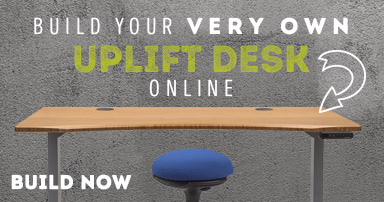The Negative Side of Positive Tilt
Posted by Human Solution on Mar 1st 2017

Since I have been using computers (I have no idea how this holds up for products made before the mid-1990’s. Sorry, gramps.) keyboards have always had those little swing-out feet in the back that let you tilt the keyboard upward. Presumably this was designed as an early ergonomic enhancement. It is called positive tilt (tilting the keyboard upward at its back edge), and as we will see, it is not exactly a benefit.
Time for the interactive segment of this blog post:
Do a couple of imaginary air-push ups while you’re sitting here reading this. If anybody looks over, pretend you’re listening to music and practicing your chair dancing. Feel how your wrists feel in that position. There is strain along the underside (medial side, for you anatomical types), because wrists are simply designed to bend more comfortably in the other direction.
With that in mind, positive keyboard tilt forces your wrists into a less extreme version of this “push up” position. It is not uncomfortable for short periods, but the cumulative effects of even minor strain over weeks and years can have negative and lasting consequences.
To fix this, neutral tilt is a good start (flip those kick-out feet back inside the keyboard), and negative tilt is better. A good adjustable keyboard tray, such as the Workrite Advantage, will let you tilt your keyboard negatively (the back edge lower than the front), which puts your wrists in their ideal position for comfort. Some keyboard trays (and other computer terminals) let you tilt your keyboard positively to a pretty extreme extent. Avoid doing so at all cost as this can rapidly accelerate the problem of repetitive stress.
In the crazy, mixed up world of keyboard tilt, negative is positive and positive is negative. Fortunately, HS will be here to help you make sense of it all.




